Mark Sisson's Blog, page 128
October 5, 2018
I Couldn’t Believe How Easily It Was All Happening
It’s Friday, everyone! And that means another Primal Blueprint Real Life Story from a Mark’s Daily Apple reader. If you have your own success story and would like to share it with me and the Mark’s Daily Apple community please contact me here. I’ll continue to publish these each Friday as long as they keep coming in. Thank you for reading!
 I’ve struggled with my weight for my entire life. I’ve been on and off diets since the 5th grade. Every time that I’d lose weight, I would just gain even more weight back. This was my way of life until about 5 years ago. I had seen a picture from my sister’s wedding, and I could barely recognize myself. I was 23-years-old and had gotten up to 260 pounds (at 5’9”). I knew I had to make a change.
I’ve struggled with my weight for my entire life. I’ve been on and off diets since the 5th grade. Every time that I’d lose weight, I would just gain even more weight back. This was my way of life until about 5 years ago. I had seen a picture from my sister’s wedding, and I could barely recognize myself. I was 23-years-old and had gotten up to 260 pounds (at 5’9”). I knew I had to make a change.
I started counting calories, but I was still eating a very high-carb diet. I also started working out (intense cardio) 5-7 days/week. I did this for about 6 months and was able to drop 50-60 lbs. This was definitely the hardest thing I had ever done. I was exhausted and constantly thinking to myself “am I going to have to live this way forever if I want to be healthy?”
Soon enough, I had started to gain weight again when I let off the gas a little bit. Accordingly, I went back to the same weight loss plan I had done before—high carb, lots of cardio, and calorie restriction. I was hungry all of the time, and I felt mentally and physically drained. I was able to drop weight again, and I had actually gotten down to 170 lbs (90 lbs lost).
 At this point, 2 years later, all I could focus on was keeping the weight off. I had some ups and downs for the next 2 years, but overall, I was able to keep the weight off and it was EXHAUSTING. I was miserable. I was constantly counting calories, and I was tired the majority of the time.
At this point, 2 years later, all I could focus on was keeping the weight off. I had some ups and downs for the next 2 years, but overall, I was able to keep the weight off and it was EXHAUSTING. I was miserable. I was constantly counting calories, and I was tired the majority of the time.
Last August (2017), someone had asked me how I was keeping my weight off, and this same person asked if I had ever thought about trying paleo. I had heard of the paleo diet, but I had never really looked into it. I was curious to know exactly what paleo was, and I began to research. I stumbled upon Marksdailyapple.com, and my life hasn’t been the same since. I dove right into all the blog posts. After reading The Primal Blueprint, I decided to adopt a primal lifestyle. I started eating a primal diet, and I stopped killing myself on the workouts. I started doing PEM exercises [Primal Essential Movement] in place of all that cardio.
I effortlessly lost 15 MORE pounds in 3 months; I was down to 155 lbs. I was starting to see major changes in my body composition. Muscles started forming, and I couldn’t believe how easily it was all happening. More importantly, I had never felt better!!! Living was much easier, and the results were much better.
I have stuck to the primal lifestyle ever since. I now have so much energy; I’m no longer obsessing over calorie-counting; I sleep better; I am excelling in my career due to a major increase in productivity; and I am a generally happier person and more fun to be around. I live a much fuller life now!
The Primal Blueprint saved my life (and my sanity). Thank you so much for teaching me how to live a healthy and full life!
THANK YOU!
Susannah R.

Want to make fat loss easier?
Try the Definitive Guide for Troubleshooting Weight Loss for free here.
The post I Couldn’t Believe How Easily It Was All Happening appeared first on Mark's Daily Apple.



October 4, 2018
How to Deadlift
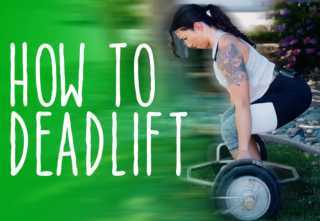 Despite its common association with hardcore bodybuilding, the deadlift is a genuine full-body exercise that (done correctly) can support even a beginning strength training program. Lifting, as many of you know, is one of The Primal Essential Movements. Ideally, lifting heavy things should mimic the activities of everyday life and build the strength necessary to make these activities easier for us—throughout our lifespan. Deadlifts do just this. They’re one of the big, compound lifts that trigger the hormonal response systems and build functional strength that make carrying bags of groceries (or the occasional kid) less strenuous—and safer. It’s the kind of strength our ancestors enjoyed, whether they were building shelter on the savannah or working farmland.
Despite its common association with hardcore bodybuilding, the deadlift is a genuine full-body exercise that (done correctly) can support even a beginning strength training program. Lifting, as many of you know, is one of The Primal Essential Movements. Ideally, lifting heavy things should mimic the activities of everyday life and build the strength necessary to make these activities easier for us—throughout our lifespan. Deadlifts do just this. They’re one of the big, compound lifts that trigger the hormonal response systems and build functional strength that make carrying bags of groceries (or the occasional kid) less strenuous—and safer. It’s the kind of strength our ancestors enjoyed, whether they were building shelter on the savannah or working farmland.
By engaging all the major muscle groups in the arms, shoulders, abs, back and legs, deadlifts (done safely) can be a top exercise for building overall strength—with added benefits to grip strength and core stability, which are more important than ever as we age. If you have back, shoulder or knee issues or are recovering from any kind of injury, you’ll want to work with a physical therapist or (with your physician’s approval) a properly certified trainer.
How To Deadlift
Layla McGowan (co-author of The Keto Reset Instant Pot Cookbook) put together this awesome video that demonstrates proper form and execution. Watch and learn, but we’ll include an outline of the major points for review, too.
Just a note: you’ll see she’s using a trap bar deadlift, commonly found in gyms. Particularly if you’re new to deadlifting or are getting back in the game or if you have wrist issues, a trap bar can be a more accommodating choice.
?
1. Put your feet at a jump-width stance (about shoulder width apart).
2. Exhale, then inhale against your diaphragm, pushing your air into your pelvis to center your strength there. Keep your core column solid and straight.
3. Next, come down on the bar with your hands at mid-foot position (parallel to your feet) and grip the higher (as Layla demonstrates) or lower handles.
4. Visualize driving through the ground with your legs as you come up, keeping your back straight, until you’re fully upright. Put your chest out (“pigeon chest”) for the top of the lift.
5. Then come down (using hamstrings and glutes) in the same posture you used to come up, again keeping your back straight.
6. Put the bar on the ground between lifts.
How Often Should I Deadlift?
For beginners, aim to do 4-6 reps, but listen to your body’s signals. Don’t sacrifice form to get in that last rep. If your body is done, it’s done. Take a rest. Try for 3-5 sets total within that workout. Choose weight that will allow you to achieve or come close to these numbers.
Remember, these big, compound movements tax the system with an emphasis on intensity and power. Deadlifts are particularly rigorous. Start by incorporating deadlifts just once a week. As you progress, there’s generally no need to do them more than twice a week.
Thanks for stopping by, everybody. Let me know your thoughts on the workout video series and if you have requests for future fitness videos. Have a great end to the week.

The post How to Deadlift appeared first on Mark's Daily Apple.



October 3, 2018
Keto Compared: Analyzing Keto Against Popular Diet Trends
 “There can be only one.”
“There can be only one.”
It’s the iconic quote from the only good Highlander movie, referring to the eternal battle immortal warriors wage across time to become the last of their kind and gain special powers over all lesser beings. I won’t say there can be only one perfect diet, but it is fun—and illustrative—to compare and contrast the different diets, not so much as a “contest” but as a method for winnowing out the differences and giving readers an idea of what might work for them.
Today, I’m going to compare the Keto Reset (my particular Primal brand of the keto diet) to other popular diet trends.
First, what is keto all about?
The ketogenic diet first gained popularity in the early 20th century, when it was discovered that feeding children with intractable epilepsy a very high-fat, low-carb diet could reduce the intensity and frequency of their seizures. Those children who responded to the diet by producing the most ketone bodies, an alternate fuel source made from fatty acids, had the best results. More ketones, fewer seizures. Thus, the diet was dubbed the ketogenic diet.
Fast forward a century, and regular people with and without serious medical conditions are using the ketogenic diet to lose body fat, improve metabolic flexibility, manage type 2 diabetes, reduce inflammation, increase injury recovery, improve cognitive function, and get off the sugar-burning roller coaster. It turns out that increasing your ability to burn fat and ketones can really improve your health, reduce your reliance on a steady stream of snack foods, and provide steady, even energy.
The Keto Reset Diet takes this one step further, going keto while emphasizing healthy whole foods that our hunter-gatherer ancestors would have recognized as food. We honor our biology by restoring our ability to burn our own body fat—the entire reason we store body fat in the first place, for instant energy—without sacrificing the nutrient density of Primal eating. If you want to read more details on how keto can benefit your health, check out this post.
But today, we’re going to see how the other popular diets stack up to keto. Do they provide the same benefits? Do they offer new ones? Are they even comparable at all?
Paleo Diet
The paleolithic diet, or paleo diet, attempts to replicate the dietary environment of our paleolithic hunter-gatherer ancestors and eschews the foods that entered the human diet once we adopted agriculture. It argues that our genes haven’t had enough time or undergone enough selective pressure to adapt to the staples of agriculture.
Okay, sure. Humans have continued to evolve in the last 10,000 years, and there are many examples of recent genetic adaptations to foods that weren’t available to our pre-agricultural ancestors. However, paleo remains a very good baseline diet with strong clinical support for lowering blood lipids, improving colon cancer risk, and losing weight.
Eat: Meat, fish, poultry, eggs, nuts, seeds, vegetables, fruits.
Avoid: Grains, legumes, dairy, sugar, industrial seed oils.
Keto is explicitly low-carb, high-fat. Paleo, with its emphasis on animal foods and vegetables, often ends up fairly ketogenic, but this isn’t a rule. Technically, paleo is macronutrient agnostic, meaning it can be high-carb or low-carb or anything in between as long as you eat the allowed foods and avoid the banned foods. A high-carb paleo diet might include a lot of roots, tubers, and fruit. A low-carb paleo diet might include a lot of nuts, seeds, meat, eggs, and non-starchy vegetables. Both would be paleo; only the latter would be ketogenic.
Paleo can certainly be keto, and “paleo-keto” is actually a fantastic way to do the diet. Combining high-fat, low-carb with an emphasis on nutrient-dense foods that closely resemble the foods humans ate for tens of thousands of years prior to agriculture works for childhood epilepsy (the “gold standard” for whether a keto diet does what it’s supposed to do)—and it’s actually the basic pattern I follow, with a few modifications.
Although we don’t have explicit evidence of the combination in adults, I see no reason to doubt its effectiveness. Keto’s great for improving cardiovascular risk factors, dropping body fat, and lowering the risk of type 2 diabetes. So is the paleolithic diet. Why would combining the two suddenly nullify the benefits of both?
Low-Carb/Atkins Diet
Low-carb, or the Atkins diet, is a classic gateway drug for paleo, Primal, keto, and everything else.
Atkins gets a bad rap. Yet sift through the Atkins bars and Atkins shakes and Atkins tortillas and all the controversy surrounding the good doctor’s death to focus on the original diet itself, and you’ll realize that Atkins isn’t a bad way to eat. It’s basically low-carb Primal: meat, fish, non-starchy vegetables, nuts, seeds, and full-fat dairy. There’s even a “maintenance phase,” where after reaching a good body composition you can relax your carb standards a bit, allow a few more fruits and maybe some potatoes here and there, and begin to approach the 150 g carbs/day zone on the Primal Carbohydrate Curve. People have the notion that it’s all bacon and salami and brie and hot dogs and lunch meat, but that’s just not the case.
As for the relative merits of low-carb/Atkins compared to keto, the two are very similar.
Low-carb gets you fat-adapted. Keto gets you there faster.
Low-carb famously helps people inadvertently reduce calories without suffering abject hunger. Keto does the same.
Low-carb preserves muscle and burns fat during weight loss. Keto does too.
Low-carb is probably easier for most people, especially newcomers to the alternative diet scene, and can actually be a great entry point that eventually leads to full-on keto.
A clinical entity called the “modified Atkins,” while less restrictive on carbs and protein than the classic ketogenic epilepsy diet, can also improve epilepsy outcomes.
The Mediterranean Diet
The Mediterranean diet concept arose when researchers in the middle of the 20th century noticed the healthy longevity of folks living in the Mediterranean region, saw some similarities between the traditional foods they ate, and threw together an amalgam of foods generally available and traditionally consumed in the region’s countries, including Spain, Italy, Greece, and southern France.
Eat: Olives, olive oil, hard cheeses, whole grains, legumes, fish, nuts, seeds, fruit, vegetables, tubers, some poultry, a little red meat.
Avoid: Processed food, refined grains, refined sugar.
The Mediterranean diet is one of the better mainstream diets. It eschews processed food, emphasizes whole foods, and highlights some very nutrient-dense foods, like fatty fish, extra virgin olive oil, and non-starchy vegetables. Even the emphasis of legumes over grains is a positive, as the former are far more nutrient-dense than the latter. It’s higher in fat than conventional low-fat diets, and, although it doesn’t specifically call out industrial seed oils, its emphasis on extra virgin olive oil crowds out bad oils than interfere with metabolic health and inflammatory status.
In studies, the Mediterranean diet performs well against conventional diets, just like keto.
There are different, lower-carb versions of the Mediterranean diet, including both a paleo Mediterranean diet (no grains, legumes or dairy) and a low-carb/keto Mediterranean diet (high fat, very low-carb). What’s funny (and unsurprising) is that these lower-carb Mediterranean diets consistently outperform higher-carb Mediterranean diets, improving fatty liver, treating metabolic syndrome, increasing weight loss without damaging blood lipids, lowering HbA1c, and dropping waist circumference. They do this by including more red meat, full-fat dairy, using more extra virgin olive oil, and eliminating the “healthy” whole grains and limiting the legumes.
After reading this section, if nothing else you will never again misspell “Mediterranean.”
If you have to choose a diet that your cardiologist will support, consider going Mediterranean and then sneakily shift it toward a ketogenic pattern.
Whole30®
The Whole30 is an elimination diet. For 30 days, you remove a host of common foods that many lines of evidence have determined to be common triggers of food intolerance, poor gut health, and inflammation. You should feel better, enjoy better digestion, and even lose some weight. After 30 days, you reintroduce the foods you removed, one at a time. When the negative symptoms return, you’ve identified the culprit(s) and can decide to move forward with or without them.
The beauty of the Whole30 is that it’s simple, straightforward, with little room for variation. You can be the most mainstream dieter in the world, with zero knowledge of polyunsaturated this or polyphenolic that or the existence of antinutrients, and still get great results from the Whole30 just by eliminating what it says to eliminate:
Grains
Dairy
Added sugar, real or artificial
Alcohol
Legumes
Carrageenan, MSG, sulfites
Treats made with approved ingredients
You won’t find any scientific papers that specifically name the Whole30. You will find a paper illustrating the potential power of the autoimmune paleo protocol—which is very similar to Whole30, if a bit more restrictive—to improve gut health and reduce the symptoms of inflammatory bowel disease. That’s serious stuff. IBD is no joke. If the autoimmune paleo protocol can do it, the Whole30 should have a similar effect.
Even though Whole30 is designed to identify foods that disrupt your digestion, increase your inflammation, and generally impair your health, it also happens to be a great weight loss tool. There are many cases of people who do a Whole30 to feel better and end up losing 15 or 20 pounds without even trying because they eliminated refined carbs and started eating more fat and protein.
The Whole30 and keto have different goals. Whole30 is about identifying food intolerances and improving gut health. Keto is about improving health, losing weight, and becoming a better fat burner.
Despite their different focuses, Whole30 and keto dieters can end up in a similar spot: a fat-burning beast with better gut health and less body fat.
The Dukan Diet
The Dukan diet is a quadruple whammy: high-protein, low-carb, low-fat, low-calorie. Given its restrictive nature—removing both carbohydrates and fats, dropping overall calories, and increasing protein—the Dukan diet is more of a temporary fat loss measure than a sustainable lifestyle. It follows four phases.
Phase 1: Nothing but animal protein in unlimited amounts. Keep it as lean as possible, minimize any cooking fat. Some oat bran is allowed for regularity. Lasts for 1-7 days, depending on how much weight you have to lose.
Phase 2: You can start adding non-starchy vegetables to your lean animal protein. However, alternate between eating just protein and eating protein plus vegetables. Protein on one day, protein and veggies the next. Stay on Phase 2 until you hit your goal weight.
Phase 3: You can add in some other foods. Each day, eat one serving of fruit (excluding figs, cherries, bananas, or grapes), two servings of whole grains, 1.5 ounces of hard cheese, one serving of starchy food. You also get to have one celebration meal per week—an appetizer, an entree, a glass of wine, and a dessert—and your animal protein can now include fattier cuts like ham, pork, and lamb. Gradually double your intake of fruit, starches, and celebration meals.
Phase 4: You can start returning to a normal diet, making an effort to continue with some of the tools and lessons you learned throughout the previous three phases. To stay on track, eat 3 tablespoons of oat bran each day, take the stairs and never the elevator, and make one day each week a pure protein day (where you eat nothing but lean protein).
The first couple phases of the Dukan diet are very similar to the Protein Sparing Modified Fast, a clinically-tested (but very difficult to maintain) rapid weight loss diet. The PSMF usually lasts between 1-2 weeks in the mostly-lean-but-want-to-see-my-abs-without-flexing community, but can be safely maintained much longer in the severely overweight or obese.
In obese patients, a PSMF allowed 47 +/- 29 pounds of weight loss. By the end of the maintenance period, most of the weight was still missing, so it was pretty successful (particularly in those who had the most to lose).
A 2-week 400-calorie PSMF was safe and effective in obese patients, especially compared to a 400-calorie liquid protein diet.
The PSMF results suggest that the Dukan diet will almost certainly result in weight loss, and the high protein content should ensure you hold onto at least some of your lean muscle mass and burn a good amount of fat, but it probably isn’t a sustainable way to live. Phase 3 of the diet can certainly be modified in a more Primal direction by eliminating the grains and making sure your starchy foods are something like potatoes or sweet potatoes. If I had to pick, I’d suggest maintaining Phase 3 rather than moving on to Phase 4 and trying to reincorporate a “healthier” version of the diet that made you fat in the first place.
As for keto and Dukan, the two share only surface level similarities.
The Dukan Diet is low-fat. Keto is high-fat.
The Dukan Diet is low-carb (for the first two phases). Keto is low-carb.
The Dukan Diet is high-protein. Keto is moderate protein.
The Dukan Diet might work a little quicker, at least in those first furious few days of protein gorging, but keto will be more sustainable.
The Carnivore Diet
The carnivore diet is self-explanatory. You eat animals and nothing else.
Eat: Meat, as much as you want. Emphasis on ruminant meat (beef, lamb, bison). Eggs, seafood, poultry. Sometimes dairy.
Avoid: Plants.
Carnivorous diets will often be ketogenic, depending on how protein affects your ability to generate ketones. Some people have to reduce protein, others can keep it fairly high and still produce ketones. Your mileage will vary.
Both are extremely low-carb, unless the carnivorous diet includes tons of fresh kills still brimming with muscle glycogen.
Carnivore fans report huge improvements in gut health, including resolution of severe bowel disorders. There isn’t any peer reviewed science to support it, but I find it compelling and credible. Still, there are several bits of evidence that show keto is quite effective in matters of the gut:
In infants with epilepsy, a ketogenic diet reshapes their gut biome to resemble that of healthy infants.
In a recent case study, a paleolithic ketogenic (similar to Keto Reset) diet successfully treated Crohn’s disease, a severe bowel disorder.
In terms of other health conditions, keto clearly has more clinical support overall, seeing as it’s been used to treat childhood epilepsy for over a hundred years and the idea of a carnivorous diet for humans would give your average nutrition researchers a heart attack.
Still, there’s the compelling case of Vilhjmajur Stefansson, the Arctic explorer who attempted a carnivorous diet after becoming enamored with the dietary habits of the Inuit. He and a colleague thrived. But in his own words, Stefansson wasn’t just eating steak and ground beef. He ate “steaks, chops, brains fried in bacon fat, boiled short-ribs, chicken, fish, liver, and bacon.” All those “weird” cuts gave him critical micronutrients otherwise difficult to get from just steak. The brains would have provided omega-3 fatty acids, copper, selenium, and vitamin C. The fish would have provided omega-3s, selenium, and (depending on the species, with halibut being a prime example) magnesium. The liver would have provided retinol, vitamin C, selenium, choline, and folate. These foods are missing from many modern carnivorous diets. That’s a mistake, I think.
For a full writeup, check out my post on the carnivore diet from a few months back. Long story short, I think it may be a viable option for some people, particularly those with massive food intolerances and/or inflammatory bowel disorders, but most people would benefit from a little plant matter that keto generously allows.
Bulletproof Diet
The Bulletproof diet suggests that adherents:
Eat 6-11 servings of organic veggies.
Eat 5-9 servings of oils, fats, nuts, seeds, legumes, and/or full-fat dairy.
Eat 4-6 servings of protein.
Eat 1 serving of starch or fruit.
The foods in each category exist on a spectrum of toxicity, with higher levels meaning you can eat more freely.
Among veggies, non-starchy ones are best; the starchier you go, the less you should eat.
Among oils and fats, egg yolks, MCT oil, cacao butter, coconut oil, avocado oil, butter, ghee, and fish oil are best. Seed oils and trans-fats are to be avoided.
Among nuts and seeds, coconut, almonds, mac nuts, and Brazil nuts are best. Soy and corn nuts take last.
Among dairy, raw, pasture-raised butter, cream, milk, and yogurt are best. All cheese and factory-farmed dairy should be avoided.
Among protein, Bulletproof brand protein supplements, grass-fed beef and lamb, pastured eggs, and low mercury fish top the list. At the bottom lie factory-farmed fish, high-mercury seafood, soy, and plant protein supplements.
Bulletproof gives great guidelines and lets the user figure out the details. It does a pretty good job of describing the optimal diet—maybe too good a job. Anyone who’s aware of the science would leap at the chance to dine exclusively on grass-fed ruminants, raw fermented dairy, pastured egg yolks, wild seafood, and loads of non-starchy organic vegetables. Few can, though. Most people will have to make a few concessions. Maybe they get farmed salmon for $8/lb instead of king salmon for $22/lb. Maybe they get the 24 pack of organic eggs for the same price as a dozen pastured eggs. It’s not “ideal,” but it’s still far better than the norm.
I have another qualm that may seem minor but isn’t in my world: the removal of cheese. Cheese has one of the better safety and nutritional profiles of all dairy foods. It’s traditional, with cheese making stretching back thousands of years. It’s fermented, which means most of the lactose has been consumed by bacteria and much of the potentially problematic casein has been modified to be more tolerable. I see no real reason to avoid it.
The Bulletproof diet is certainly compatible with keto. If you follow the guidelines and eat mostly non-starchy vegetables, healthy fats, and high-quality animal protein (and maybe some hard cheese), you’ll be on a high-fat, low-carb ketogenic diet.
Clean-Eating
Clean-Eating is the most difficult diet to pin down.
There are a dozen different “clean-eating” camps, far too many to discuss today. I’ll focus on the two biggest types of clean-eating: bodybuilders/strength trainers/gym rat clean eating and “Whole Foods clean eating.”
In the bodybuilding and strength training world, clean eating means:
Eating whole, unprocessed foods.
Eating lean meats, avoiding overly fatty meats. Skinless chicken breast, not skin-on chicken thigh.
Eating whole grains, like whole wheat bread, oats, and brown rice.
Eating “healthy fats,” like peanut butter, almonds, and avocados.
Eating tons of vegetables.
Limiting salt and sugar.
Emphasizing protein, then carbs, then fat.
In the “Whole Foods” clean eating world, clean eating means:
Eating whole unprocessed foods.
Eating more plant-based food, limiting meat.
Drinking smoothies, usually containing at least one of the following: turmeric (seldom with black pepper to increase bioavailability, though), ginger, garlic, beets, kale, sprouts.
Avoiding gluten, BPA, sugar.
Mainlining millet, BPS, agave nectar.
Pseudo desserts like chia puddings, frozen bananas on a stick drizzled with nut butter.
The binding principle among all clean eating camps is belief in “unhealthy foods,” foods that are inherently flawed and harmful—either to one’s health, one’s body composition, one’s gains, or all three. What those unhealthy foods consist of depend entirely on which camp a person subscribes to.
I’m not going to disparage clean eating, even if it’s fun to tease. Both Primal and keto have many characteristics of clean eating; almost every diet does. We can justify our classifications of “unclean” foods with references to the scientific literature and through evolutionary perspectives, but we still have pretty strong ideas of what constitutes a healthy food.
What About the Primal Blueprint Way of Ketogenic Dieting?
My word isn’t the final one. The two primary criteria for a good diet is that you can follow it and it actually works for you. Tens of millions of people happily follow the Standard American Diet, but it doesn’t work for them. You must find something that you can actually maintain.
My personal brand of Primal Keto—the Keto Reset Diet—just seems to work really well for a large number of people.
What sets Primal Keto apart from most other diets?
It turns you into a fat burner. This builds the fat-burning mitochondria that allow you to utilize stored body fat, process more energy, and skip meals without losing your cognitive edge or collapsing into a hangry vortex.
It increases satiety. Not being hungry is a huge boon to any dieter. Diets get a whole lot easier to follow when you’re not engaged in a constant battle of the will.
It focuses on fat quality, not just quantity. By paying attention to the quality of the fat you eat, emphasizing healthy monounsaturated and saturated fats rather than seed oils high in omega-6 polyunsaturated fats, you make your mitochondria more resilient and efficient.
It focuses on nutrient density. Conventional keto dieters who focus only on “fat” and “carbs” run the risk of missing out on crucial micronutrients found in plant and non-traditional animal foods (organs, shellfish, fish).
It’s adaptable. Once you’re truly fat-adapted, you’ve built a strong arsenal of fat-burning mitochondria, and your brain isn’t as reliant on glucose, you can loosen up. You can enter the “keto zone,” where instead of rigorously counting carb calories, you drift in and out of ketosis as you see fit.
Anyway, folks. That’s all I’ve got for today. Let me know what you think down below. Let me know how you think keto compares to all the other diets out there.
Thanks for reading. Take care!
References:
Sharma S, Jain P. The modified atkins diet in refractory epilepsy. Epilepsy Res Treat. 2014;2014:404202.
Gershuni VM, Yan SL, Medici V. Nutritional Ketosis for Weight Management and Reversal of Metabolic Syndrome. Curr Nutr Rep. 2018;7(3):97-106.
Clemens Z, Kelemen A, Fogarasi A, Tóth C. Childhood absence epilepsy successfully treated with the paleolithic ketogenic diet. Neurol Ther. 2013;2(1-2):71-6.
Bueno NB, De melo IS, De oliveira SL, Da rocha ataide T. Very-low-carbohydrate ketogenic diet v. low-fat diet for long-term weight loss: a meta-analysis of randomised controlled trials. Br J Nutr. 2013;110(7):1178-87.
Goday A, Bellido D, Sajoux I, et al. Short-term safety, tolerability and efficacy of a very low-calorie-ketogenic diet interventional weight loss program versus hypocaloric diet in patients with type 2 diabetes mellitus. Nutr Diabetes. 2016;6(9):e230.
Mattei J, Sotos-prieto M, Bigornia SJ, Noel SE, Tucker KL. The Mediterranean Diet Score Is More Strongly Associated with Favorable Cardiometabolic Risk Factors over 2 Years Than Other Diet Quality Indexes in Puerto Rican Adults. J Nutr. 2017;147(4):661-669.
Xie G, Zhou Q, Qiu CZ, et al. Ketogenic diet poses a significant effect on imbalanced gut microbiota in infants with refractory epilepsy. World J Gastroenterol. 2017;23(33):6164-6171.
The post Keto Compared: Analyzing Keto Against Popular Diet Trends appeared first on Mark's Daily Apple.



October 2, 2018
7 Drinks to Boost Your Immune System
 It’s that time of year again: cold and flu season. Your immune system is a powerful, multi-tiered network of organs and cells that protects you against foreign, deleterious microbes—and it will be working overtime to keep up with all the viruses and bacteria that circulate more readily during colder seasons.
It’s that time of year again: cold and flu season. Your immune system is a powerful, multi-tiered network of organs and cells that protects you against foreign, deleterious microbes—and it will be working overtime to keep up with all the viruses and bacteria that circulate more readily during colder seasons.
A healthy overall lifestyle (including a good diet and ample sleep) provides the ultimate foundation for healthy immune function, but there are also natural, delicious “supplemental” ways to shore up your body’s defense system. Each of the following seven drinks contains potent nutrients your immune system needs to keep you healthy.
1. Green Tea
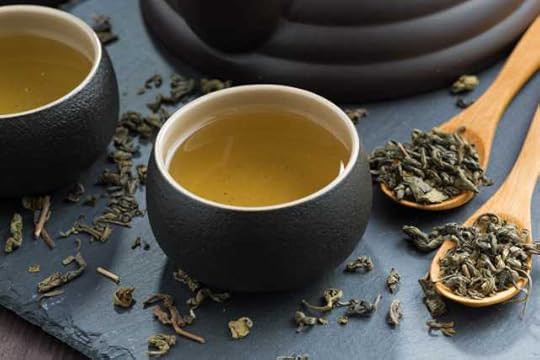
One of green tea’s most powerful ingredients is a plant compound known as Epigallocatechin gallate, or EGCG. In addition to keeping cells healthy, EGCG has been shown to increase the number of T cells (a type of white blood cell that plays a key role in fighting infections) in the body, according to research in Immunology Letters. Though the study was done on mice, researchers found that EGCG “turned-on” T cell expression in the spleen and lymph nodes, and by extension, helped control immune response.
2. Vegetable and Fruit Juice

Sugar content aside, there are reasons to not write off the therapeutic potential of nutrient dense juices. Vitamin C is a powerful immune-strengthening micronutrient that can boost your T and B cell (a type of white blood cell that produces antibodies) counts. In fact, a vitamin C deficiency makes you more susceptible to infections, according to a paper in Nutrients. And since your body can’t make vitamin C on its own, you have to be sure to get it through your diet — namely, via fresh fruits and veggies.
Citrus fruits like orange and grapefruit are some of the best (and tastiest!) sources of this key vitamin, and juices can make it easier to get high doses in quick order. But citrus isn’t the only source by far. Research suggests pomegranate juice may have antimicrobial and antiviral properties, largely thanks to plant compounds like ellagic acid and tannins like punicalagin. Finally, guava juice, particularly if the whole fruit is used, offers more than twice the amount of vitamin C as a small orange, with fewer carbs to boot.
You can buy your juice at the store, but pressing fresh fruits into homemade juice will ensure you get the most bang for your nutritional buck. When it comes to vitamin C, freshness matters.
Just keep in mind that juices probably won’t help cure an existing cold. However, regular doses of vitamin C may shorten the length of your cold or lessen your symptoms.
3. Chai Tea

This fragrant, spicy black tea owes many of its health benefits to a hearty blend of spices, which often includes ginger, cardamom, cinnamon, black pepper, cloves and fennel. Ginger, for example, has been shown to have antimicrobial properties, as well as the ability to reduce inflammation. Similarly, cinnamon contains potent polyphenols that offer protection from free radicals and help fight inflammation. Taken together, these and the other ingredients in chai tea offer a flavorful means for boosting immune health. Just stay away from the overly sweetened versions you often find at coffee shops — especially if you’re monitoring your blood sugar.
Finally, keep in mind that chai tea contains varying levels caffeine, so you may want to opt for another beverage if you’re sensitive.
4. Lemon-Flavored Water (Hot or Cold)
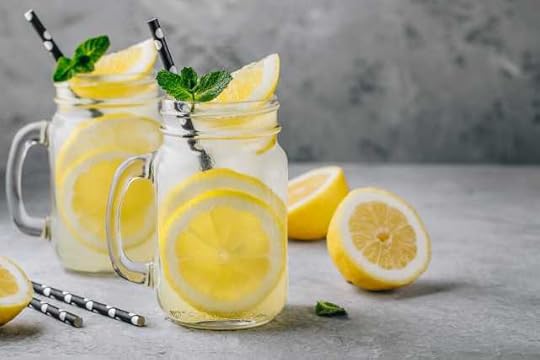
Much like its less-tart cousins, orange and grapefruit, lemon is a great source of vitamin C. In fact, just one of these citrus fruits provides roughly half your daily recommended dose. But since lemon can be pretty intense on its own, you may have better luck squeezing some into water to dilute it. Add a wedge or two to a mug of steaming hot water, or a tall glass of chilled water for a quick immunity boost.
5. Chamomile Tea

The flowers of this calming beverage are filled with plant compounds known as flavonoids, which may help reduce inflammation. Not to mention, inhaling the steam from chamomile may soothe symptoms of a common cold, though the research isn’t conclusive. Boost the power of your tea by adding a squeeze of fresh lemon.
6. Yogurt Smoothies
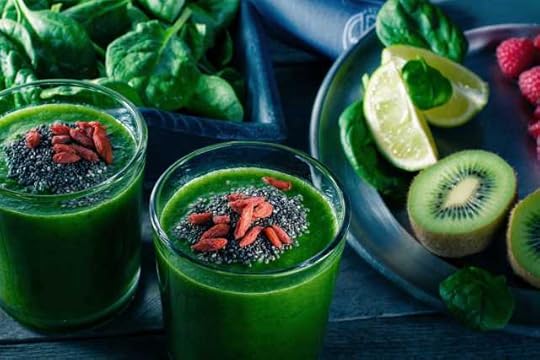
Yogurt as a source of probiotics offers a great means for creating thick, creamy smoothies that not only taste delicious, but also support the gut flora environment so essential to your immune function. Some studies reveal that probiotics can reduce inflammation, as well as reduce your likelihood of developing an upper respiratory infection. Plus, yogurt smoothies are a great way to add more immune-boosting fruits like strawberry and kiwi to your diet. Look for yogurt that’s been fortified with vitamin D (or make sure you’re getting enough through natural sun exposure or separate supplement), as this micronutrient is also a potent immune system booster.
7. Bone Broth

Finally, bone broth can influence immune function through the secondary means of supporting a healthy gut, which is a primary seat of immune function in the body. If your digestive health is compromised through untreated food sensitivities, leaky gut syndrome, or autoimmune conditions (often a confluence of these factors), bone broth may be a linchpin in rebooting your immune system.
Here are some additional immune-boosting tips:
Start Small: Swap out your regular beverages with any (or all) of the seven above. Each option contains key cold- and flu-fighting nutrients to keep your immune system healthy.
Get (or Stay) Active: Other lifestyle habits aside from nutrition also contribute to a healthy immune system. Regular physical activity, for example, promotes blood circulation, which helps your immune-supporting cells travel where needed. In fact, just 20 minutes of moderate-intensity exercise may be enough to stimulate the immune system to produce an anti-inflammatory response, according to a study in Brain, Behavior and Immunity. [https://www.sciencedirect.com/science...]
Get Outside: Regular doses of sunlight may also support a healthy immune system, as shown by a 2016 study in Scientific Reports. [https://www.nature.com/articles/srep3...] It turns out that the blue light found in natural sunlight gets your T cells moving faster so they can respond to infections more efficiently. Just one more reason to get outside!
Thanks for stopping by today, everyone. Thoughts, questions? Share them below, and have a great week.

References:
Wong CP, Nguyen LP, Noh SK, Bray TM, Bruno RS, Ho E. Induction of regulatory T cells by green tea polyphenol EGCG. Immunol Lett. 2011;139(1-2):7-13.
Carr AC, Maggini S. Vitamin C and Immune Function. Nutrients. 2017;9(11).
Howell AB, D’souza DH. The pomegranate: effects on bacteria and viruses that influence human health. Evid Based Complement Alternat Med. 2013;2013:606212.
https://medlineplus.gov/ency/article/...
Karuppiah P, Rajaram S. Antibacterial effect of Allium sativum cloves and Zingiber officinale rhizomes against multiple-drug resistant clinical pathogens. Asian Pac J Trop Biomed. 2012;2(8):597-601.
Wang S, Zhang C, Yang G, Yang Y. Biological properties of 6-gingerol: a brief review. Nat Prod Commun. 2014;9(7):1027-30.Rao PV, Gan SH. Cinnamon: a multifaceted medicinal plant. Evid Based Complement Alternat Med. 2014;2014:642942.
Srivastava JK, Shankar E, Gupta S. Chamomile: A herbal medicine of the past with bright future. Mol Med Rep. 2010;3(6):895-901.
Hao Q, Lu Z, Dong BR, Huang CQ, Wu T. Probiotics for preventing acute upper respiratory tract infections. Cochrane Database Syst Rev. 2011;(9):CD006895.
Aranow C. Vitamin D and the immune system. J Investig Med. 2011;59(6):881-6.
The post 7 Drinks to Boost Your Immune System appeared first on Mark's Daily Apple.



October 1, 2018
Dear Mark: PUFA/SFA Swap, Ticks and Meat Allergy, HIIT for Older Men
 For today’s edition of Dear Mark, I’m doing three quick topics. First, what are we to make of the studies in which replacing saturated fat and trans-fat with omega-3 and omega-6 polyunsaturated fat seems to reduce heart disease? Second, although red meat is nutrient dense and generally a more interesting option than plain chicken breast, some people have legit red meat allergies (tick-induced or otherwise). What do I think about that and the tick situation in general? And third, is HIIT an effective (and safe) option for middle-aged men?
For today’s edition of Dear Mark, I’m doing three quick topics. First, what are we to make of the studies in which replacing saturated fat and trans-fat with omega-3 and omega-6 polyunsaturated fat seems to reduce heart disease? Second, although red meat is nutrient dense and generally a more interesting option than plain chicken breast, some people have legit red meat allergies (tick-induced or otherwise). What do I think about that and the tick situation in general? And third, is HIIT an effective (and safe) option for middle-aged men?
Let’s go:
Larry pointed out an interesting quote from the PUFA article I linked to on Sunday.
Quote from the heart disease explanation article-a reason to be wary of ‘PUFA Paranoia’:
“Summarising the clinical studies, Ramsden and colleagues performed a meta-analysis of randomised controlled trials comparing mixed omega-3/omega-6……-When saturated fat plus trans-fat was replaced by omega-3 and omega-6, there was a significant 22% reduction in non-fatal MI plus CHD death“
Still a good idea to choose seed oils wisely, though.
Nice catch, Larry. Of course, this illustrates the difficulty and downright impossibility of making perfect nutrient-for-nutrient swaps.
The meta-analysis you describe in the quote wasn’t exploring every potential option for a person. They combined saturated fat and trans-fat into one group, and omega-3 with omega-6 into another, then swapped one group for the other. They never mingled, they never explored a little from here, a little from there. They “replaced” one group of fats with another group.
What does it say about removing trans-fat and leaving saturated fat? Nothing.
What does it say about removing trans-fat, leaving saturated fat, and including omega-3s and omega-6s? Nothing.
What does it say about adding some omega-3s to the saturated fat in your diet, eliminating both trans-fat and omega-6 seed oils? Nothing.
Those three scenarios are far more realistic than wholesale fatty acid replacement. Unfortunately, they’re very difficult to study at scale to produce nice, neat headlines. The best thing to do is for each individual to eat, live, and experiment with full presence, an open mind, and an inquisitive disposition. Be subjective, be objective. How you feel, look, and perform are valid biomarkers, as are more traditional biomarkers like lipids, CRP, waist circumference, glucose, and insulin.
Article about allergy to red meat due to tick bites. Increased incidence of heart attack and stroke as well as 30% more arterial plaque. That is me. Off red meat 2 months ago and feel so much better 4 years after stents the 1 year later double bypass. Needed more but too much plaque for more bypass grafts so had TMR procedure. 2 tics in Jr. High and High School. Sister had beef and pork allergies in elementary school and took allergy shots for years. We must remember we are all different and what works for some doesn’t for others.
Hope links are allowed here. If not google “tics, red meat and atherosclerosis”.
https://www.sciencedaily.com/releases/2018/06/180615154514.htm
I love links. Bring ’em on.
Very good, valid point: We are all different and what works for some doesn’t work for others.
The tick issue is really quite concerning, especially for a group of people like Primal Blueprinters. We love the outdoors, where ticks thrive. We love wearing minimalist footwear, which ticks can easily surmount and get at our bare skin. Sometimes we don’t even wear shoes at all, which makes it even easier for them. We enjoy exerting ourselves, breathing hard, and working up a sweat, and ticks are drawn to the carbon dioxide we exhale and the ammonia we produce in our sweat. I bet we even taste better.
Growing up in Maine, ticks were around, but not like they are these days. And in Malibu, ticks were pretty few and far between. I never had a single one in all my time there. My dogs? Maybe once or twice. That’s with frequent exposure, too. They’re everywhere now.
Be careful out there, folks. And not just because you like your red meat.
Hey Mark,
I’ve heard others mention HIIT as a must for older guys.
You failed to mention it in the how to fix it section and I was wondering if that was intentional or just an oversight. Thoughts?
HIIT is fantastic for older guys. The problem many people have is the “high intensity” part scares them off. They worry they’re too frail, or their better days are behind them, or that they’ll break or twist or pull something. Or maybe it’s just because the older you are, the (generally) slower you are, and you figure you’ll never be able to approach true “intensity.” Well, intensity is relative. What matters is that you are doing something that’s intense for you, something that stresses and forces your body to adapt.
Let’s look at some research.
In middle-aged men, high intensity interval training had a stronger, more positive, and faster-acting effect on heart rate variability than classic aerobic endurance training. The HIIT consisted of 4-6 30 second all out cycling sprints with 4 minutes rest—extremely intense, this is the Wingate test which famously provides puke buckets. The endurance training was 40-60 minutes at 60% peak workload. Improved heart rate variability is a powerful marker for improved health, stress resilience, and cardiovascular health in particular (one of the big ones for older men).
Even untrained middle-aged men can handle HIIT. A cool version called 15-10-5 (15 seconds of slow movement, 10 seconds of moderate running, 5 seconds of all out sprints, done continuously for the time allotted) helped middle aged men cut body fat and increased both muscle mass and bone mineral density.
Older patients with heart failure who are still in the hospital can do it, too. A group of them performed a few sessions of one minute high intensity aerobic intervals at 80% peak Vo2max with 4 minutes rest in the hospital, improving muscle power along the way.
Cycling is the classic HIIT movement employed in these populations, since they’re relatively “low-impact” while still being intense as hell. You can do anything you’re comfortable doing. If you want to tackle straight sprinting but worry about your joints, try uphill sprints. They’re my go-to option, because they’re incredibly hard but easier on the joints than running on flat ground. Also check out these alternatives.
That’s it for today, folks. Have a great rest of the week. Be sure to let me know your thoughts down below.

References:
Kiviniemi AM, Tulppo MP, Eskelinen JJ, et al. Cardiac autonomic function and high-intensity interval training in middle-age men. Med Sci Sports Exerc. 2014;46(10):1960-7.
Ravnholt T, Tybirk J, Jørgensen NR, Bangsbo J. High-intensity intermittent “5-10-15” running reduces body fat, and increases lean body mass, bone mineral density, and performance in untrained subjects. Eur J Appl Physiol. 2018;118(6):1221-1230.
Taya M, Amiya E, Hatano M, et al. High-intensity aerobic interval training can lead to improvement in skeletal muscle power among in-hospital patients with advanced heart failure. Heart Vessels. 2018;33(7):752-759.
The post Dear Mark: PUFA/SFA Swap, Ticks and Meat Allergy, HIIT for Older Men appeared first on Mark's Daily Apple.



September 8, 2018
Low-Carb Mug Cake
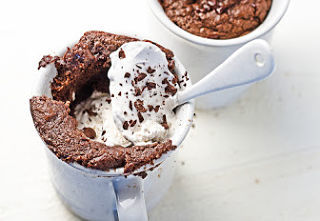 Admittedly, it’s hard to believe that a chocolate cake made in a microwave without flour or sugar could taste any good. This low-carb mug cake defies the odds. It has dark chocolate flavor, a soft, cakey texture and bits of real dark chocolate that melt in your mouth.
Admittedly, it’s hard to believe that a chocolate cake made in a microwave without flour or sugar could taste any good. This low-carb mug cake defies the odds. It has dark chocolate flavor, a soft, cakey texture and bits of real dark chocolate that melt in your mouth.
This low-carb mug cake recipe works because it has the right balance of ingredients—one egg yolk, a little butter and cream, almond flour and dark chocolate. In less than a minute the ingredients bake together into a perfect little treat, and your kitchen is filled with the amazing aroma of chocolate cake.
Make this mug cake even more decadent by pouring melted dark chocolate or whole cream over the warm cake when it’s done.
Time in the Kitchen: 5 minutes
Servings: 1 cake
Ingredients
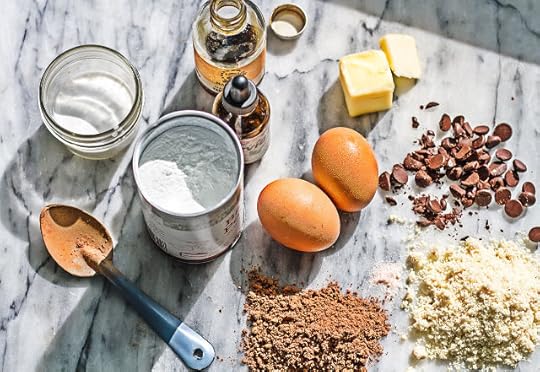
1 tablespoon unsalted butter (15 grams)
2 tablespoons super fine almond flour (14 grams)
1 tablespoon raw cacao powder (5 grams)
½ teaspoon baking powder (2.5 ml)
Pinch of salt
1 tablespoon heavy cream (15 ml)
¼ teaspoon vanilla extract (1.2 ml)
8 drops liquid stevia https://www.marksdailyapple.com/stevi... (add more, or less, depending on your preference)
1 large egg yolk
9 grams (3 squares) dark chocolate (85% cacao), chopped
Instructions

Melt the butter into a small mug, in the microwave (about 20 seconds).
Mix in the almond flour, cacao powder, baking powder and a tiny pinch of salt until thick and smooth.
Add the heavy cream, vanilla extract, and liquid stevia. Mix until smooth, then add the egg yolk and mix again until smooth.
Stir in the dark chocolate.

Put the mug back in the microwave and cook for 50 seconds. Microwaves vary, so the exact cooking time can vary as well, but overcooking the mug cake will make it dry and burn the bits of dark chocolate. Error on the side of undercooking, rather than overcooking the cake.
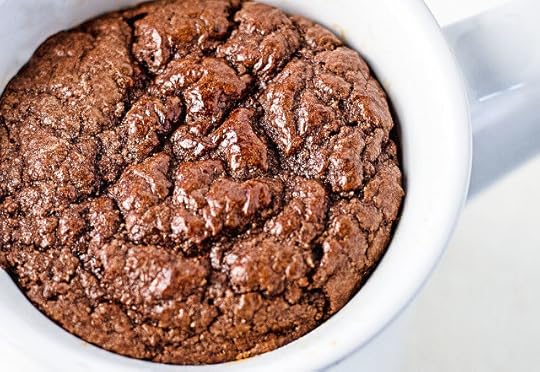
This low carb mug cake has the best texture and flavor when it’s freshly baked and warm, so enjoy immediately!
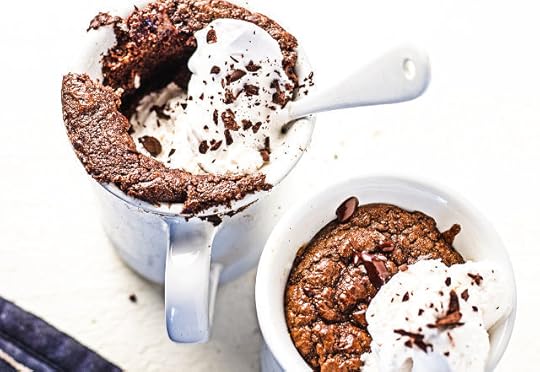
Calories: 362
Fat: 33.6 grams
Protein: 7 grams
Carbs: 10.4 grams
Want more Primal recipes?
Try the Primal Blueprint Slow Cooker Cookbook for free here.
The post Low-Carb Mug Cake appeared first on Mark's Daily Apple.



September 7, 2018
It Felt Like a Rebirth Into Living
It’s Friday, everyone! And that means another Primal Blueprint Real Life Story from a Mark’s Daily Apple reader. If you have your own success story and would like to share it with me and the Mark’s Daily Apple community please contact me here. I’ll continue to publish these each Friday as long as they keep coming in. Thank you for reading!

It all began back in March of 2011 when I stepped on the scale for my semi-annual military weigh-in. The scale menacingly peaked at 195 pounds, which seemed outrageous to me. Over the next few days I couldn’t shake a feeling of self-diminishment. I mean, here I was, fresh off of completing the Miami Marathon which had been preceded by 18 weeks of focused training and I had GAINED weight?! I was incredulous! I tried to rationalize it away by telling myself that the scale was likely off, or that my running shorts and socks probably added a couple of pounds. But honestly, when I looked in the mirror, I couldn’t see the guy who ran cross country and weighed 165 pounds back in high school and college. Heck, I couldn’t even see the “healthy” guy I thought I was 10 pounds ago. I was burdened by the feeling that my 30-pound weight gain was the start of an inevitable decent into outright obesity.
Days later, some of my office mates began talking about how their Crossfit gym was doing a Paleo diet challenge. As a self identified runner I was cynical on Crossfit, and as a Crossfit cynic I was even more contemptuous about what I viewed as a Crossfit diet. On and on they went, over the course of the next few weeks talking about the food they were eating, the weight they were losing, and how good they felt. Like a religious skeptic I finally decided to research what they were doing with food, if only to prove it wrong. So I bought The Paleo Diet by Loren Cordain.
 I’m an impatient person though, and so while waiting for the book to arrive I started Google searching “paleo” and stumbled across Mark’s Daily Apple. I think the first post I read was The Definitive Guide to Grains, and I was hooked. I began to consume the past blog posts like a ravenous animal, reading every Definitive Guide, checking all the hyperlinked references, and taking notes. The blog posts, especially the ones about sugar, carbs, vegetable oils, and grains were describing symptoms that I didn’t even realize I had. I assumed that weight gain, joint inflammation, constipation, frequent sickness, lack of energy, and trouble focusing were a normal part of the human condition for someone close to entering their 30s. I mean, after all, that’s what my doctor had told me at my previous annual physical.
I’m an impatient person though, and so while waiting for the book to arrive I started Google searching “paleo” and stumbled across Mark’s Daily Apple. I think the first post I read was The Definitive Guide to Grains, and I was hooked. I began to consume the past blog posts like a ravenous animal, reading every Definitive Guide, checking all the hyperlinked references, and taking notes. The blog posts, especially the ones about sugar, carbs, vegetable oils, and grains were describing symptoms that I didn’t even realize I had. I assumed that weight gain, joint inflammation, constipation, frequent sickness, lack of energy, and trouble focusing were a normal part of the human condition for someone close to entering their 30s. I mean, after all, that’s what my doctor had told me at my previous annual physical.
So I went for it, and just jumped into the proverbial pool head first from the 10-meter platform. I followed Mark’s weekly health challenge to clean out the pantry from a post I found from way back on 12 February 2007, yes I still remember that simple blog post. I emptied out all the soda (my normal post marathon training workout recovery drink), ditched the bagels (daily breakfast), threw away the loaves of bread (lunch time sandwiches), trashed the chips and cookies (lunch sides and pre workout snack), deep-sixed the instant pasta sides and frozen garlic bread (normal dinner side dish), disposed of all the…oh wait, did I mention my wife was 8 months pregnant for the first time? Yeah so I ended up going back out to the store and buying sodas, bagels, bread, chips, cookies, pasta, and some ice cream to feed the standard American diet pregnancy cravings. Suffice it to say that she had no interest in starting some “fad diet” in the home stretch of bearing our first child. So we had an honest discussion about it and agreed that I would eat 100% Primal for 4 weeks but she would stay conventional for breakfast and lunch. She would join me in a Primal meal at dinner time provided I cooked it.
Those 4 weeks felt like a rebirth into LIVING.
I shed 15 pounds effortlessly while cooking meals from The Paleo Diet book and from recipes on Mark’s Daily Apple. Many of the previously mentioned symptoms improved quickly and some went away completely in those 4 short weeks. I also started to embrace Mark’s emphasis on intuitively understanding my body and observed, for example, that eliminating salt (as advised in The Paleo Diet book) gives me bad charley horses at night. That intuition of the positive and negative effects on my body has been huge over the years as I continue to experiment with slight alterations to my eating and lifestyle.
After those 4 weeks I never looked back. I ditched the chronic cardio and turned my new found diet into a lifestyle. While I was the Primal fanatic, I like to jokingly refer to my wife as a slow adopter. My gateway to a Primal lifestyle was a desire to lose some weight, something she has never struggled with. She started to come around, however, after seeing the myriad additional benefits. Among other things, her chronic digestive issues have been largely corrected through experimentation with eliminating dairy and supplementing probiotics.
Fast forwarding the story to a year ago, my wife’s mom was diagnosed with advanced bile duct cancer. Her body rapidly withered away and she passed in only a few weeks’ time. Part of our cathartic release involved reading every book we could find on the interrelated topics of cancer, metabolism, and lifestyle. We decided to take our Primal lifestyle to the next level by eliminating toxins in our home, improving our sleep, experimenting with Ketosis, eating the highest quality nutrient dense foods we can find, and getting more serious about fitness (I even do Crossfit now – from skeptic to convert!). Each of these has had lasting and noticeable positive impacts on our lives.
Our family of five is now fully Primal and loving it. We both feel like this lifestyle provides its own feedback mechanism. Whenever we partake in the standard American diet, whether at a dinner party or visiting friends and family, our bodies remind us of why we rejected it in favor of a Primal lifestyle!
Lastly I want to talk briefly about kids and encourage other Primal parents out there. Our three kids (7, 5, and 1) very rarely eat sandwiches, have had cereal maybe three or four times, and have never tasted soda. They love eating unwashed carrots straight out of the garden and liverwurst fried up in grass-fed butter. I say this not to brag, but to embolden parents who are worried about enforcing this lifestyle on their children as some of my peers have lamented. My personal observation is that kids raised on the tastes of real foods crave the genuine and unadulterated flavor of things like eggs, purple sweet potato, and dry roasted nuts. Yes, they still desire processed junk, but out of its novelty not out of sugar addiction, and they will readily eat whatever Primal offering is put before them.
For anyone struggling to transition kids from a standard American diet to Primal there is hope as well. Our family has seen the benefits with the foster children that we care for. On the first morning with our first foster child, a 4-year-old boy, I asked him what he wanted for breakfast. Without skipping a beat, he un-ironically demanded “Coke and a snickers.” We compromised on a smoothie with lots of ripe banana. Over time, with steady work and gentleness, we transitioned him from his normal candy and pizza to steak and buttered broccoli. His health improved DRAMATICALLY. We’ve since repeated that amazing reversal with another little 3-year-old boy who arrived in our home overweight, suffering from sleep apnea, full of cavities, and chronically sick. As we slowly reduced their sugar intake, we saw remarkable improvements in the physical and emotional health of these precious children. In the end, the difficulty of transitioning them off the garbage was absolutely worth the benefits.
Thanks to Mark, WorkerBees, and all leaders in the Paleo/Primal community who have mentored me from afar, I’m forever grateful!


The post It Felt Like a Rebirth Into Living appeared first on Mark's Daily Apple.



September 6, 2018
10 Delicious DIY Salad Dressings
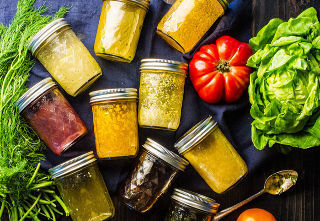 (This post is an update to an earlier post version.)
(This post is an update to an earlier post version.)
A Big-Ass Salad, as you know, is a perfect main meal of the day. However, with a little creativity there’s no limit to how (or when) you can enjoy your favorite combination of vegetables, greens and more. While Primal Kitchen® now offers a literal rainbow of 11 ready-made dressings and marinades that are all natural, whole-food, and fully Primal choices (including vegan and Whole30®-approved options), there’s always room for DIY creativity to fit your favorite salad varieties. Check out these 10 Primal-worthy ideas—and share your own in the comment section. Enjoy!
1. Raspberry Vinaigrette
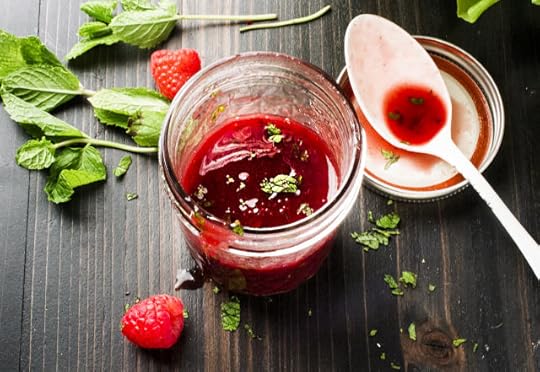
This salad dressing is a summer classic. It’s tasty and refreshing—especially when paired with a salad of mixed baby greens, feta cheese and toasted walnuts.
Ingredients:
1 cup of fresh or frozen (defrosted) raspberries
1/3 cup of Primal Kitchen® Extra Virgin Avocado Oil
2 Tbsp white wine
1/2 packet of stevia or monkfruit (or equivalent of other natural, low-carb sweetener)
1 Tbsp fresh mint leaves, finely chopped
1/2 teaspoon of sea salt
Black pepper, to taste
Method:
Finely chop mint leaves or shred in food processor. Set aside.
Puree fresh or defrosted raspberries in food processor until smooth. Pour into a mason jar or other container with a tight lid.
Mix raspberry puree with extra virgin avocado oil and white wine. Add sea salt, black pepper, sweetener and shredded mint leaves. Close the jar or container tightly, and shake to combine.
Serve immediately over salad and enjoy!
2. Citrus Vinaigrette
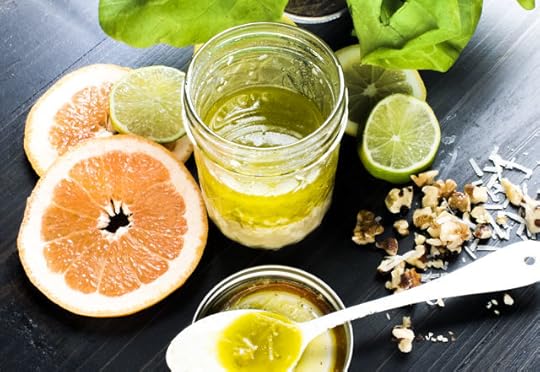
Liven up a regular salad with this crisp and refreshing summer-inspired salad dressing.
Ingredients:
1/2 cup Primal Kitchen Extra Virgin Avocado Oil
1 Tbsp fresh squeezed orange juice
1 Tbsp fresh squeezed grapefruit juice
1 Tbsp fresh lime juice
1 Tbsp fresh lemon juice
2 Tbsp chopped walnuts
Salt and pepper to taste
Method:
Again, in a large mason jar or container with a tight lid, combine the orange juice, grapefruit juice, lime juice, and lemon juice. Drizzle in the avocado oil while whisking vigorously with fork. Once mixed, add the walnuts and stir. Season with salt and pepper to taste.
3. Dill Vinaigrette

This salad dressing is so tasty, you’ll want to double the recipe so that you can have it again when dinner time rolls around!
Ingredients:
1/3 cup Primal Kitchen Extra Virgin Avocado Oil
1 Tbsp red wine vinegar
1tsp dried dill weed
1/8 tsp onion powder
1/8 tsp garlic powder
1/8 tsp dry mustard
Salt and pepper to taste
Method:
In a blender or food processor (low setting), combine the oil, vinegar, dill weed, onion powder, garlic powder, and dry mustard. Blend until smooth. Add salt and pepper to taste. Cover and refrigerate until chilled.
4. Balsamic Vinaigrette

Although this makes a great, simple salad dressing, it’s equally delicious as a marinade for meat or drizzle on steamed vegetables.
Ingredients:
1/3 cup Primal Kitchen Extra Virgin Avocado Oil
1 Tbsp balsamic vinegar
1 clove garlic, crushed and minced
1/2 tsp dried oregano
1 tsp Primal Kitchen Organic Brown Spicy Mustard
Salt and pepper to taste
Method:
In a mason jar or other container with a tight lid, combine all the ingredients. Shake until all ingredients are combined. Refrigerate until ready to serve.
5. Basil Vinaigrette
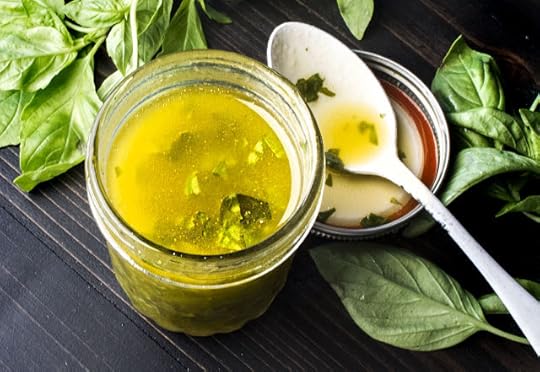
Delicious year round, this salad is especially tasty when paired with an Italian-themed salad laden with fresh mozzarella and ripe tomatoes.
Ingredients:
1/3 cup Primal Kitchen Extra Virgin Avocado Oil
1 Tbsp white wine or white wine vinegar
2 Tbsp chopped fresh basil (It’s very important here to use fresh.)
2 cloves garlic, minced
Method:
In a bowl, whisk together the avocado oil, wine or vinegar, basil, and garlic. Refrigerate until ready to serve.
6. Parsley Dressing

Try this flavorful dressing on a salad of mixed greens or other mild-flavored salad combination.
Ingredients:
1/3 cup Primal Kitchen Extra Virgin Avocado Oil
2 Tbsp lemon juice
1/4 tsp onion powder
1 1/2 Tbsp chopped parsley
Method:
In a bowl, combine the avocado oil, lemon juice and onion powder. Once combined, add in the chopped parsley, mix thoroughly with a whisk and serve.
7. Lemon Caesar Dressing

Try this citrus-infused spin on the popular salad dressing option.
Ingredients:
1/2 cup Primal Kitchen Extra Virgin Avocado Oil
1 tsp lemon peel (finely grated)
3 Tbsp lemon juice
1 tsp Primal Kitchen Organic Brown Spicy Mustard
1 tsp anchovy paste
1 tsp Worcestershire sauce
1 clove garlic, minced
1 Tbsp sour cream
Salt and pepper to taste
Method:
In a bowl, whisk all ingredients except oil and sour cream. Once combined, slowly add oil, whisking constantly until smooth (if you stop, the dressing could break). Once combined, whisk in sour cream until smooth and creamy. Refrigerate until ready to serve.
8. Asian Dressing

Add a taste of the orient (without the added sugar) with this tangy Asian-inspired dressing.
Ingredients:
1/3 cup Primal Kitchen Extra Virgin Avocado Oil
3 Tbsp sesame oil
1/4 cup fresh orange juice
1 Tbsp white vinegar
2 Tbsp sesame seeds
2 tsp Asian mustard (should be easily found in the ethnic food aisle of your local grocery store)
1/4 tsp kosher salt
1 medium garlic cloves, minced
Method:
In a bowl, whisk together orange juice, vinegar, sesame seeds, mustard, sugar, salt, and garlic. Once combined, slowly whisk in sesame oil.
9. Ginger-Asian Dressing

A second spin on the Asian dressing theme, this dressing is delicious on salads as well as steamed or grilled veggies.
Ingredients:
1 carrot, fresh, peeled and finely shredded
1/2 cup Primal Kitchen Extra Virgin Avocado Oil
1 Tbsp white wine vinegar
1 Tbsp cider vinegar
1 tsp coconut aminos
2 Tbsp sesame oil
1 Tbsp minced onion
1 tsp hot mustard
1/2 tsp fresh ginger root, grated
Method:
Combine all ingredients in a blender or food processor. Blend until smooth.
10. French Style Dressing
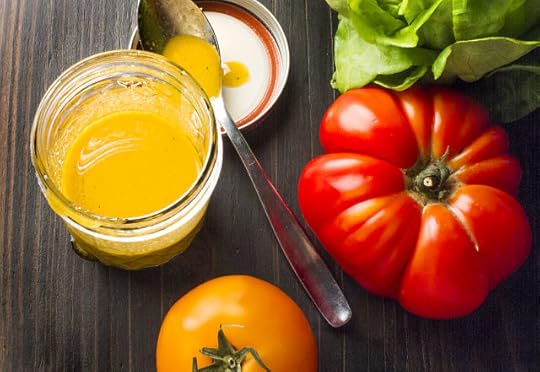
Looking for a way to get the kids to eat their greens? This tasty recipe is sure to wow them.
Ingredients:
1/3 cup Primal Kitchen Extra Virgin Avocado Oil
2 Tbsp red or white wine vinegar
1/2 tsp dry mustard
1 tsp unsalted tomato paste
2 tsp water
1/2 tsp fresh minced onion
1/2 tsp sea salt
1/4 tsp ground white pepper
Method:
In a large mason jar or other container with a tight lid, combine all ingredients, shake it up and serve.
Thanks for stopping in today, everyone. Which dressing looks like something you’d try? Any DIY recipes you’d like to share? We’d love to hear from you on the comment board. Have a great end to the week.

The post 10 Delicious DIY Salad Dressings appeared first on Mark's Daily Apple.



September 5, 2018
The Pros & Cons of Hormone Replacement Therapy for Primal Women
 A Primal woman’s first reaction to the prospect of taking synthetic hormone replacements for menopause? Probably a healthy dose of skepticism. We in the ancestral health community, after all, tend to view pharmaceuticals as a last resort—interventions that are overprescribed by vested interests, create their own set of side effects, and may even do more harm than good. To suggest that we “need” this or that prescription raises our hackles.
A Primal woman’s first reaction to the prospect of taking synthetic hormone replacements for menopause? Probably a healthy dose of skepticism. We in the ancestral health community, after all, tend to view pharmaceuticals as a last resort—interventions that are overprescribed by vested interests, create their own set of side effects, and may even do more harm than good. To suggest that we “need” this or that prescription raises our hackles.
Besides, it’s not like menopause is a product of modernity or an aberration our ancestors never experienced; it’s a physiological stage that evolution has protected and selected in humans. It’s perfectly natural. Rather than the debilitating, miserable experience many women report having, menopause should be easier. Graceful, even. But it often isn’t.
And nature unfortunately doesn’t care about that. Menopause is nature’s way of preventing undue discomfort and reducing genetic damage to the group. Your average 50-year-old woman has a lot to offer the tribe in terms of wisdom, child care, and general know-how, but natural selection has also determined that it’s better for everyone if middle-aged women don’t easily get pregnant. Menopause achieves this by down-regulating the hormones and weakening the tissues necessary for conception. The problem is that these same hormones and tissues also figure prominently in a woman’s enjoyment of life and overall health.
What can happen when Mother Nature decides to step in?
Anxiety
Irritability
Loss of libido, vaginal atrophy
Night sweats
Hot flashes
Weight gain
Forgetfulness
Longer-term, menopause increases the risk of serious diseases like osteoporosis, heart disease, and breast cancer.
Those aren’t mere inconveniences. They can mar the beauty of what should be an enjoyable part of a woman’s life, interfering with her relationships, her productivity, her cognitive function, her sleep, and her basic ability to enjoy living.
Mother Grok didn’t take pharmaceutical hormone replacements, you might counter. She didn’t hit up the shaman for a compound blend of hormones, so why should you?
First of all, maybe she did. Pre-scientific peoples have been known to develop folk cures that seem primitive but end up getting scientific validation. Think of the medieval garlic-based concoction that we just found out can eliminate medication-resistant staph infections. Or the indigenous Amazonian tribes who somehow figured out if you brewed a certain vine with a certain leaf and drank the finished product you’d visit the spirit world, all without knowing the vine contained DMT and the leaf contained an MAO-inhibitor that made the DMT orally active. Or, to bring it back to menopause, the yam, which cultures have used for hundreds of years for menopause treatment without actually knowing it contains an estrogen mimetic with clinical efficacy.
Second of all, the basic Primal stance on pharmaceutical interventions is that they are useful and suitable when correcting a deficiency, a genetic proclivity, or an evolutionary mismatch—particularly when dietary and lifestyle interventions aren’t cutting it. If they can help us treat a condition that seriously impedes our life or pursuit of health, we should avail ourselves of the fruits of modern science. Hormone replacement therapy may very well qualify.
Philosophical qualms aside—does hormone replacement therapy (HRT) work? What factors play into its effectiveness—and safety?
First, Is It Safe?
This might just be the most contentious topic in medicine.
For decades, HRT was the standard treatment for postmenopausal women. Not only was it given to treat the symptoms of menopause, it was billed as an antidote to many of the chronic diseases that increased in frequency after menopause like breast cancer, osteoporosis, and heart disease. Most of this was based on observational data and small pilot studies. That changed with the Women’s Health Initiative (WHI), a massive series of randomized controlled trials involving tens of thousands of postmenopausal women. Finally, the establishment would get the solid backing they needed to continue prescribing HRT to millions of women for prevention of chronic disease.
Except it didn’t turn out so well. Midway through, they stopped the trial because they weren’t getting the desired results.
There were two different HRT study groups. In one study, women without uteruses either got placebo or estrogen alone. In the other, women with uteruses got a combo of estrogen and progestin (a progesterone analogue) or placebo. The estrogen was Premarin, a conjugated estrogen. The progestin was Prempro, or medroxyprogesterone acetate.
The E/P combo increased the risk of heart disease, breast cancer, pulmonary embolism, and stroke, and reduced the risk of colorectal cancer and fractures (but not enough to offset the increased risks).
The estrogen alone had no effect on heart disease (contrary to their hypotheses), but it did appear to increase the risk of stroke while decreasing the risk of breast cancer and fractures.
Following the publication and wide dissemination of the WHI results, HRT use plummeted among women. Breast cancer cases subsequently dropped by 15-20,000 per year. Hormone replacement therapy developed a bad rap that it has yet to shake.
Is it deserved? Yes and no.
While the WHI results highlight some very real risks associated with HRT, they don’t tell the whole story. There are other variables to consider when deciding on HRT.
How Early You Start Taking HRT Matters
Most of the women in the WHI study began HRT when they were very post-menopause: older, in their 60s and upward. They got worse results.
A much smaller proportion of the women in the study were under 60 when they started HRT. They had better results. In fact, among those women who initiated HRT before age 60, total mortality actually dropped by 30%.
Another analysis of the Women’s Health Initiative data found that women who started taking HRT during early pre-menopause were less likely to see the negative effects, like increased breast cancer and heart disease.
Another study found that older post-menopausal women taking estrogen took hits to their working memory that remained after therapy cessation, while younger post-menopausal women had no such reaction.
Women who took oral estradiol 6 years after menopause saw their subclinical atherosclerosis slow down. Those who took it later (10 years after) did not.
A recent large Cochrane meta-analysis found that while in general postmenopausal women taking HRT had a moderately increased risk of heart disease, breast cancer, and other diseases, a subgroup of healthy, 50-59 year old (so, younger) HRT users only had a slightly increased risk of venous thromboembolism.
The longer you wait to initiate HRT after menopause, the more adverse effects occur. Start earlier, if you do start
How You Administer the HRT Matters
Oral hormones have different metabolic fates than transdermal hormones. When you swallow a hormone, it goes to the liver for processing. This creates various metabolites with different bioactivity. One example is oral estrogen. When you take estrogen orally, you raise CRP, a marker of inflammation. Transdermal estrogen has no effect on CRP.
Oral HRT has been shown across multiple studies to increase the risk of venous thromboembolism, while transdermal HRT does not. This is because oral HRT increases thrombin generation and clotting, while transdermal HRT does not.
In the Women’s Health Initiative that found negative effects, the HRT given to the subjects was oral. Perhaps this was the issue.
For local vaginal symptoms, local application is probably ideal, while oral application is suboptimal. In one study, vaginal estriol was far more bioactive than oral estriol, despite the latter resulting in higher serum levels of the hormone.
However, topical isn’t always best. In one study, sublingual users of bioidentical hormones saw relief from night sweats, irritability, hot flashes, anxiety, emotional lability, sleep, libido, fatigue, and memory loss, while topical users only saw relief from night sweats, emotional lability, and irritability.
The Type Of Hormone You Take Matters
Another factor the WHI failed to address was the composition of the medication itself. They used synthetic hormones—conjugated estradiol and medroxyprogesterone acetate. Could bioidentical hormones, exact replicas of endogenous hormones which exploded in popularity following the WHI, have a different effect?
The amount of research into conventional HRT dwarfs bioidentical hormone therapy (BHT) research, but what we have looks pretty compelling.
Breast cancer is a major concern for HRT users. Most breast cancers respond to estrogen, just over half respond to progesterone, and traditional HRT seems to increase their risk. Yet, at least in healthy postmenopausal women, a combination percutaneous estradiol gel (inserted into the skin) and oral micronized progesterone—both bioidentical to their endogenous counterparts—had no effect on epithelial proliferation of the breast tissue, while reducing activity of a protein that protects cancer from cell death. The conventional HRT had the opposite effect, increasing epithelial proliferation and breast volume (a risk factor for breast cancer). This wasn’t about cancer, but it’s suggestive.
In another study, postmenopausal women on BHT (which included estriol, estradiol, progesterone, testosterone, and DHEA) saw improvements across all measured cardiovascular, inflammatory, immune, and glucoregulatory biomarkers despite being exposed to high levels of life stress.
Then again, in a recent study, bioidentical hormones performed poorly compared to the pharmaceuticals equine estrogen and medroxyprogesterone acetate. The pharmaceutical hormones resulted in a lower risk of breast cancer, although the bioidentical hormones still reduced the risk compared to placebo.
Which Hormones You Take Matters
The vast majority of postmenopausal women take estrogen, progesterone, or some combination of the two. But there’s another hormone that, despite plummeting during menopause, gets ignored—testosterone.
Although testosterone is the “male hormone,” it also plays a vital role in female physiology, especially sexual function. Menopause reduces testosterone by about half, and studies indicate that topical testosterone replacement therapy can improve sexual function and desire (combined with estrogen) as well as musculoskeletal health and cognitive performance in postmenopausal women. More importantly, topical testosterone improves sexual function without causing any of the adverse effects commonly associated with testosterone usage in women, like hair loss, voice deepening, body hair growth, facial hair growth, breast pain or tenderness, or headaches.
Adding low-dose testosterone to a low-dose estrogen regimen may even be better at reducing somatic symptoms of menopause (sleep disturbances, hot flashes, and other physical symptoms) than a higher dose of estrogen alone.
Your Expectations Matter
Our big mistake was treating HRT as a panacea for the chronic conditions of aging. It’s not that smart hormone replacement can’t or won’t reduce the risk of certain diseases, like osteoporosis or heart disease. It’s that we’re still figuring it out.
A better, safer move is to focus on what we know HRT can treat: the symptoms of menopause.
Want to reduce hot flashes and get more sleep? HRT works.
Want to reduce anxiety? HRT works.
Want to improve cognitive function and your sense of smell? HRT works.
The use of bioidentical hormones may be safer or more effective against the bigger stuff. It remains to be seen. Until then, treat symptoms, not chronic disease—but keep in mind your overall risks and discern whether treating the symptoms is worth any additional risk for that bigger stuff.
Your Personal Context Matters
Women with a history of estrogen-responsive breast cancer (80% of breast cancers) should exhibit caution and check with their oncologist before taking any kind of HRT.
ApoE4 carriers should seriously look into taking HRT. In one recent study, postmenopausal ApoE4 carriers exhibited rapid cellular aging—except if they were taking HRT.
Whatever You Decide…
Don’t feel guilty if you decide to take some form of it. I myself take a small dose of testosterone to get my levels up to where they should be. My wife, Carrie, has taken bioidentical hormones in the past (a modest compound blend of estrogen, progesterone, and testosterone) to deal with the symptoms of menopause, including persistent brain fog that didn’t respond to any other herbal or alternative measure in her case. There’s no shame. This is restoration of what’s healthy and supportive of a good life.
Heck, I know women who are both aware of the potential long term risks—heart disease, breast cancer, and the like—and enthusiastic about the shorter-term, more immediate quality-of-life benefits they currently enjoy. They prefer the definite benefits over the small and uncertain absolute risk increases. Some have even said that feeling better day-to-day gives them the energy to continue living a healthy life in other ways.
I also know women who do the opposite, who either are lucky enough to not experience any profound symptoms in their transition or who prefer to use other methods and interventions to deal with their symptoms in order to avoid any increased long-term complications. (I’ll delve more into this in the future if there’s interest.) Regardless, it’s all a choice.
Hopefully after today you feel better equipped to make an informed one.
What about you, folks? I know I have thousands of readers who are facing this very question—or who have already faced it. What did you choose? How did you handle the HRT question?
Thanks for reading. Take care!
References:
Wu WH, Liu LY, Chung CJ, Jou HJ, Wang TA. Estrogenic effect of yam ingestion in healthy postmenopausal women. J Am Coll Nutr. 2005;24(4):235-43.
Murkes D, Lalitkumar PG, Leifland K, Lundström E, Söderqvist G. Percutaneous estradiol/oral micronized progesterone has less-adverse effects and different gene regulations than oral conjugated equine estrogens/medroxyprogesterone acetate in the breasts of healthy women in vivo. Gynecol Endocrinol. 2012;28 Suppl 2:12-5.
Ruiz AD, Daniels KR. The effectiveness of sublingual and topical compounded bioidentical hormone replacement therapy in postmenopausal women: an observational cohort study. Int J Pharm Compd. 2014;18(1):70-7.
Stephenson K, Neuenschwander PF, Kurdowska AK. The effects of compounded bioidentical transdermal hormone therapy on hemostatic, inflammatory, immune factors; cardiovascular biomarkers; quality-of-life measures; and health outcomes in perimenopausal and postmenopausal women. Int J Pharm Compd. 2013;17(1):74-85.
Zeng Z, Jiang X, Li X, Wells A, Luo Y, Neapolitan R. Conjugated equine estrogen and medroxyprogesterone acetate are associated with decreased risk of breast cancer relative to bioidentical hormone therapy and controls. PLoS ONE. 2018;13(5):e0197064.
Schiff I, Tulchinsky D, Ryan KJ, Kadner S, Levitz M. Plasma estriol and its conjugates following oral and vaginal administration of estriol to postmenopausal women: correlations with gonadotropin levels. Am J Obstet Gynecol. 1980;138(8):1137-41.
Scarabin PY. Hormone therapy and venous thromboembolism among postmenopausal women. Front Horm Res. 2014;43:21-32.
Espeland MA, Rapp SR, Manson JE, et al. Long-term Effects on Cognitive Trajectories of Postmenopausal Hormone Therapy in Two Age Groups. J Gerontol A Biol Sci Med Sci. 2017;72(6):838-845.
Hodis HN, Mack WJ, Henderson VW, et al. Vascular Effects of Early versus Late Postmenopausal Treatment with Estradiol. N Engl J Med. 2016;374(13):1221-31.
Santoro N, Allshouse A, Neal-perry G, et al. Longitudinal changes in menopausal symptoms comparing women randomized to low-dose oral conjugated estrogens or transdermal estradiol plus micronized progesterone versus placebo: the Kronos Early Estrogen Prevention Study. Menopause. 2017;24(3):238-246.
Yazici K, Pata O, Yazici A, Akta? A, Tot S, Kanik A. [The effects of hormone replacement therapy in menopause on symptoms of anxiety and depression]. Turk Psikiyatri Derg. 2003;14(2):101-5.
Doty RL, Tourbier I, Ng V, et al. Influences of hormone replacement therapy on olfactory and cognitive function in postmenopausal women. Neurobiol Aging. 2015;36(6):2053-9.
Jacobs EG, Kroenke C, Lin J, et al. Accelerated cell aging in female APOE-?4 carriers: implications for hormone therapy use. PLoS ONE. 2013;8(2):e54713.
Kingsberg S. Testosterone treatment for hypoactive sexual desire disorder in postmenopausal women. J Sex Med. 2007;4 Suppl 3:227-34.
Davis SR, Wahlin-jacobsen S. Testosterone in women–the clinical significance. Lancet Diabetes Endocrinol. 2015;3(12):980-92.
Achilli C, Pundir J, Ramanathan P, Sabatini L, Hamoda H, Panay N. Efficacy and safety of transdermal testosterone in postmenopausal women with hypoactive sexual desire disorder: a systematic review and meta-analysis. Fertil Steril. 2017;107(2):475-482.e15.
Simon J, Klaiber E, Wiita B, Bowen A, Yang HM. Differential effects of estrogen-androgen and estrogen-only therapy on vasomotor symptoms, gonadotropin secretion, and endogenous androgen bioavailability in postmenopausal women. Menopause. 1999;6(2):138-46.

The post The Pros & Cons of Hormone Replacement Therapy for Primal Women appeared first on Mark's Daily Apple.



September 4, 2018
Protein Shake Roundup: 15 Keto and Paleo Recipes
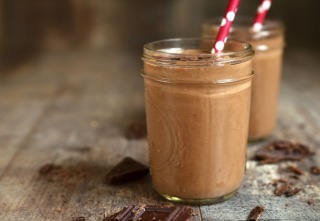 Today’s post is served up by the folks at PaleoHacks.com. Thanks to their team for the awesome recipe ideas. Hope you all enjoy!
Today’s post is served up by the folks at PaleoHacks.com. Thanks to their team for the awesome recipe ideas. Hope you all enjoy!
Get ready to drink your way to health with this nutritious Protein Shake Roundup!
Smoothies and shakes can get a bad rap for spiking your blood sugar—especially ones with artificial sweeteners. But with the addition of protein from a healthy source—like collagen peptides or protein powders—smoothies and shakes can make a great snack or meal replacement.
These guilt-free smoothies and shakes are made only with wholesome ingredients and natural sweeteners—no dairy or processed sugars here! You’ll be surprised at how some of these healthy shakes and smoothies drink just like dessert.
Keep this list handy to help you find top-notch recipes that’ll energize you throughout the day!
#1 Amazing Paleo | Dark Chocolate Smoothie with Collagen Peptides
Yes, even chocolate shakes can be healthy! Banana, cacao powder, nut butter, coconut milk, honey and vanilla combine with two scoops of collagen peptides for one decadently-rich smoothie.
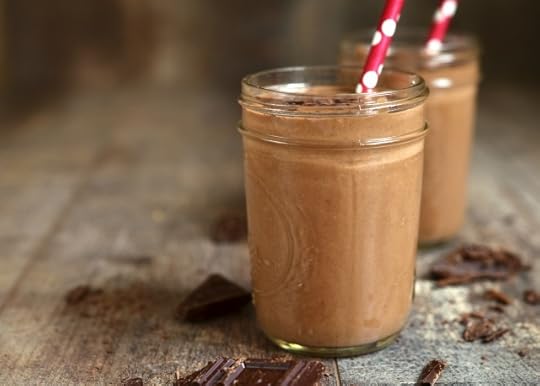
#2 Further Food | Vanilla Chai Collagen Protein Smoothie
Skip the chai tea latte and opt for this blended protein smoothie. It’s spiced with cinnamon, ginger, cardamom and cloves!

#3 KetoDiet Blog | Creamy Keto Cinnamon Smoothie
When it comes to the protein in this creamy smoothie, you’ve got options! Choose from your favorite protein powder or go for a few scoops of collagen, then blend up with coconut milk, coconut oil, cinnamon, and chia seeds for even more protein.

#4 Autoimmune Wellness | Collagen-Berry Green Smoothie
This protein-packed smoothie is the perfect on-the-go meal for those following the autoimmune protocol. It helps balance blood sugar by blending collagen with healthy fat!
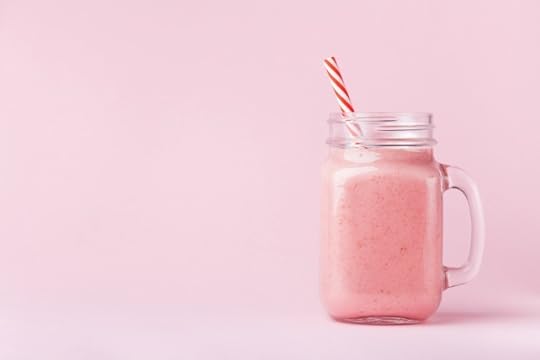
#5 Healing Family Eats | Maple Pumpkin Collagen Shake
Channel those fall vibes with this protein shake packed with pumpkin, banana, fresh oranges and cinnamon.

#6 Butter Nutrition | Real Food Protein Shake
This sweet strawberry shake nixes over-processed protein powders in favor of simple sources like collagen and pastured-raised egg yolks.

#7 Cook Eat Paleo | Espresso Protein Shake
This high-protein shake is almost like breakfast in a glass. Espresso or strong coffee blends up with cashew milk, bananas and ice for a creamy treat better than anything you can find at the Starbucks drive-thru.

#8 Wicked Spatula | Brownie Batter Protein Shake
This protein shake is like eating brownie batter off a spoon, but way healthier. Dark cocoa powder adds rich chocolatey flavor while collagen peptides boost its nutritional value.
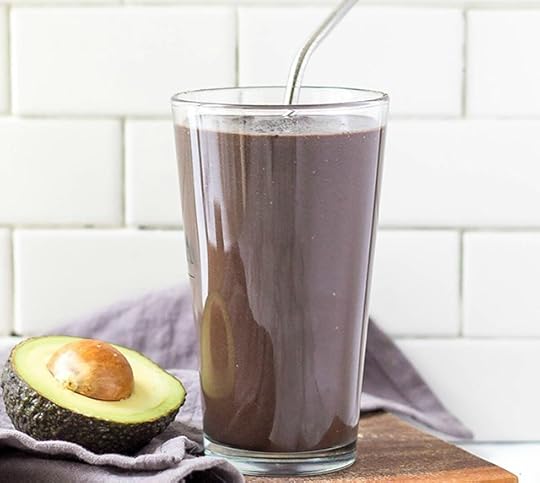
#9 It’s a Mom’s World | Almond Joy Protein Shake
Get your candy fix with this nourishing chocolate, almond, and coconut-packed protein shake. It’s full of healthy fats to give you some serious staying power.

#10 PaleoHacks | Caramel Protein Smoothie
Dates substitute for rich caramel in this sweet protein smoothie. If you’re looking for a bigger energy boost, try adding maca powder to the mix.

#11 Love and Zest | Coconut Cream Pie Protein Shake
Dessert for breakfast? Yes, please! This shake is dense with coconutty flavor, while protein powder rounds everything out for the perfect meal replacement.

#12 The Kitchen Prep | Samoa Cookie Protein Shake
If you’re a cookie fiend, this protein shake is for you. It’s made with coconut flakes, Paleo caramel, and dairy-free chocolate chips to remind you of your favorite Girl Scout treat!

#13 Appetite for Energy | Raspberry Keto Protein Shake
Raspberries make for a sweet and tangy shake that mixes perfectly with coconut cream, but feel free to use any combination of berries you like!

#14 Low Carb Alpha | Almond Vanilla Protein Shake
This almond vanilla shake is full of staple pantry ingredients, so it’s extra easy to whip up on a dime.

#15 Against All Grain | Chocolate Paleo Protein Shake
Cashew milk makes for an ultra-creamy base to this simple and nourishing recipe chocolate protein shake.

Thanks again to PaleoHacks for their post today. Do you have favorite smoothie recipes? Share them below, and have a great week, everyone.

The post Protein Shake Roundup: 15 Keto and Paleo Recipes appeared first on Mark's Daily Apple.



Mark Sisson's Blog
- Mark Sisson's profile
- 199 followers



